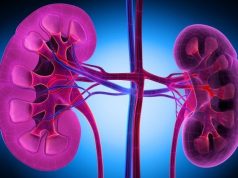Odds of BMD testing up with history of osteoporosis, rheumatoid arthritis, bisphosphonate use
TUESDAY, Oct. 13, 2020 (HealthDay News) — The rate of bone mineral density (BMD) testing is low among men with prostate cancer initiating androgen deprivation therapy (ADT), according to a study published online Oct. 1 in the Journal of the National Comprehensive Cancer Network.
Jason Hu, from McGill University in Montreal, and colleagues examined the proportion of BMD testing in the period from six months before through 12 months after initiation of ADT. A total of 22,033 patients initiating ADT from 2000 to 2015 for >12 months were included in the analyses. Variables associated with ADT testing were examined.
The researchers found that 17.8 percent of the cohort underwent BMD testing. From 2000 to 2015, there was an increase in the rates of BMD testing from 4.1 to 23.4 percent. History of osteoporosis, rheumatoid arthritis, use of bisphosphonates, and long-term corticosteroid use were associated with increased odds of BMD testing in multivariable adjusted analyses (odds ratios, 1.84, 1.64, 1.47, and 1.63, respectively). Lower odds of BMD testing were seen in association with patient age older than 80 years, metastases, higher Charlson comorbidity score, and rural residence (odds ratios, 0.67, 0.79, 0.65, and 0.77, respectively).
“Only a minority of patients with PCa [prostate cancer] initiating long-term ADT received a BMD test. Although the rates did increase from earlier years, they remain low even in more contemporaneous years,” the authors write.
Abstract/Full Text (subscription or payment may be required)
Copyright © 2020 HealthDay. All rights reserved.








